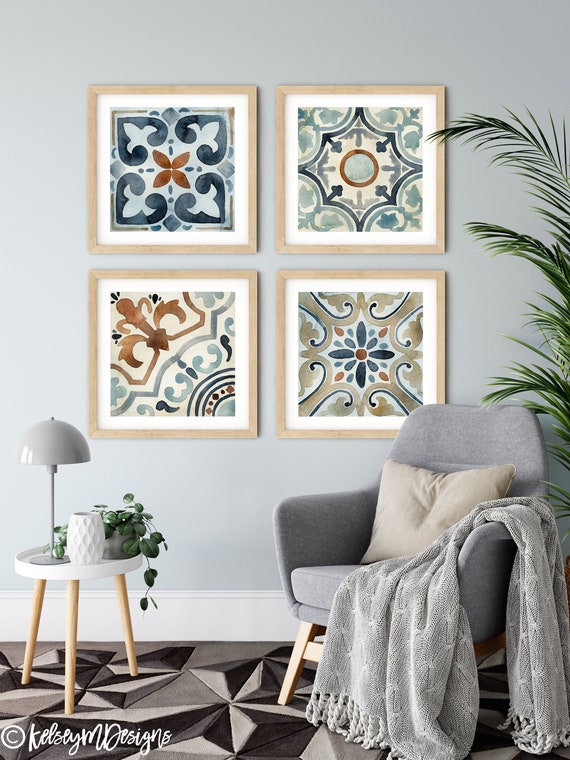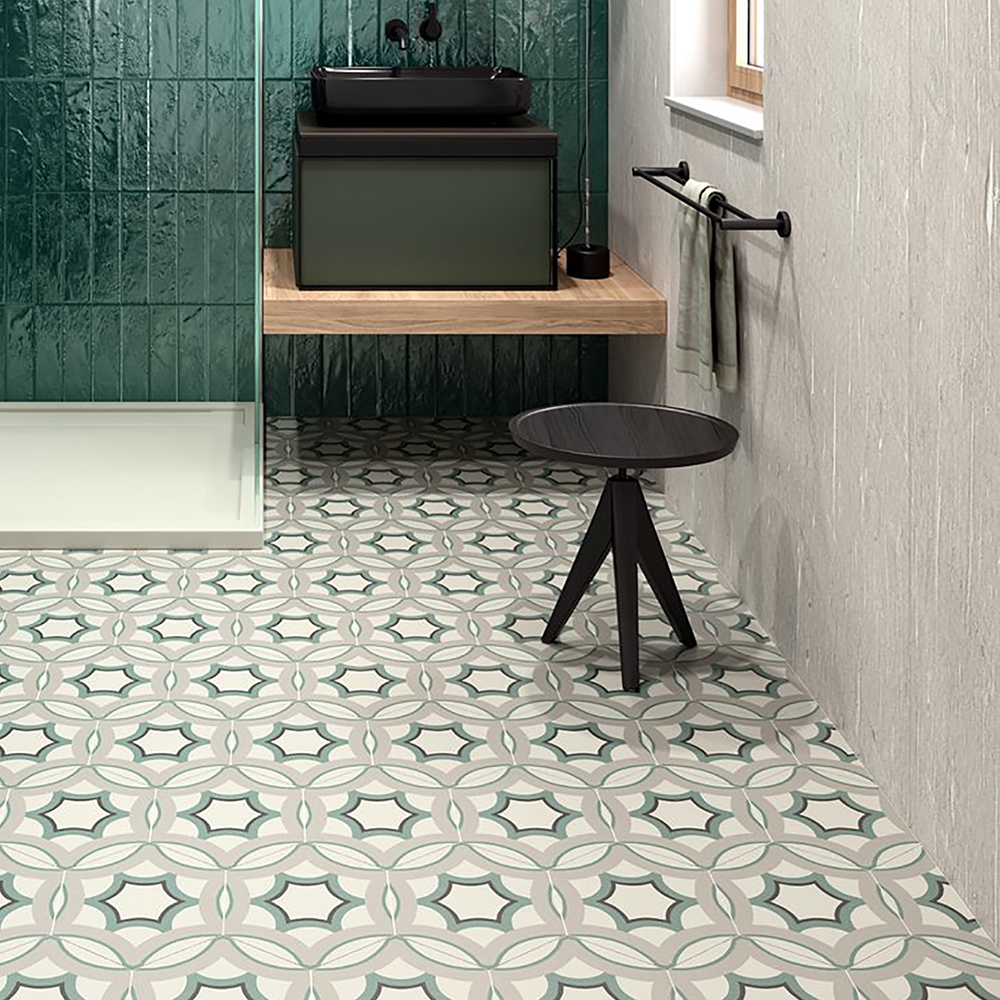Tile art decor is a unique and vibrant way to enhance your living space. Not only does it add character to your home, but it also allows for limitless creativity! In this article, we will explore everything you need to know about tile art, from styles and materials to tips for installation and maintenance. After all, as someone who has spent countless hours experimenting with tile art, I can assure you it’s an incredibly fulfilling endeavor.
What is Tile Art Decor?
Tile art decor refers to the use of ceramic or porcelain tiles to create decorative patterns, murals, or accents within a space. This art form can be applied in various settings, such as kitchens, bathrooms, outdoors, and even as standalone pieces of wall art.
The History of Tile Art
The use of tiles in art dates back thousands of years, with origins traced to ancient civilizations such as the Egyptians, Greeks, and Persians. Each culture introduced unique techniques and styles, contributing to the rich tapestry of tile art we see today.
Key Historical Developments
- Ancient Egypt: Encaustic tiles adorned tombs and temples, reflecting religious beliefs.
- Islamic Art: Intricate geometric patterns and floral designs characterized tiles from this period.
- Renaissance Italy: Majolica tiles became popular, showcasing vivid colors and detailed imagery.
Types of Tile Art Decor
There are various styles and types of tile art, each bringing its own unique flair to any space. Below, we will explore some of the most popular options.

1. Mosaic Tile Art
Mosaic art involves assembling small pieces of tiles (often in varied colors and materials) to create larger images or patterns. This ancient technique can be used creatively for wall murals, tabletops, and flooring.
Pros and Cons of Mosaic Tile Art
| Pros | Cons |
|---|---|
| Highly customizable and personalized. | Time-consuming to create. |
| Durable and long-lasting. | Requires professional installation for large projects. |

2. Subway Tile Art
Subway tiles are rectangular tiles often seen in kitchens and bathrooms. Their simple design makes them versatile, and they can be arranged in various patterns (like herringbone or stacked) to create a stylish look.
Pros and Cons of Subway Tile Art
| Pros | Cons |
|---|---|
| Easy to clean and maintain. | Can appear too simplistic if not styled correctly. |
| Wide variety of colors and finishes available. | Standard installation methods may not suit all styles. |

3. Hand-Painted Decorative Tiles
Hand-painted tiles add a unique artistic touch to any space. Artists use various techniques to create beautiful and intricate designs, making each piece one-of-a-kind.
Pros and Cons of Hand-Painted Tiles
| Pros | Cons |
|---|---|
| Unique and artisanal quality. | Higher cost due to labor. |
| Can tell a story or express individual style. | May require special care to maintain. |

4. Terrazzo Tiles
Terrazzo tiles are made from chips of marble, quartz, granite, or glass, poured with a cement or resin base. They provide a modern and chic look, often utilized in both residential and commercial spaces.
Pros and Cons of Terrazzo Tiles
| Pros | Cons |
|---|---|
| Extremely durable and long-lasting. | Can be expensive to install. |
| Available in a wide range of colors and patterns. | Requires professional installation. |

Choosing the Right Tiles for Your Decor
Selecting the right tiles is crucial for achieving your desired aesthetic effect. Here’s a guide that can help you determine the best options for your space.
Consider Your Space
Before purchasing tiles, assess the location and purpose of the area. For instance, heavier-duty tiles may be necessary for high-traffic areas or outdoor spaces, while lighter, more decorative tiles may suit less-used rooms.

Tips for Choosing Tiles
- Think about the overall theme of your decor. Do you want something modern, traditional, or eclectic?
- Consider the size of the tiles in relation to your space. Larger tiles can make a space feel bigger, while smaller tiles can add detail.
- Choose the right finish. Glossy tiles reflect light and can brighten a room, while matte finishes provide a subtle, understated look.
Style and Color
Choose tiles that will complement your existing furniture and color schemes. Here are some popular styles to consider:

- Classic White: Timeless and versatile.
- Bold Colors: Make a statement and add energy to the room.
- Neutral Tones: Create a calming and sophisticated atmosphere.
Incorporating Tile Art Decor Into Your Home
Now that you understand the various types of tile art decor and how to choose the right tiles, let’s explore some creative ways to incorporate tile art into your home.
Accent Walls
One popular trend is to create an accent wall using decorative tiles. This can add depth and interest to a room. Consider using bold colors or intricate patterns to make a statement.
Backsplashes
A tile backsplash in kitchens or bathrooms not only protects the walls but also serves as an artistic focal point. Opt for colorful mosaics or classic subway tiles to suit your style.
Flooring Options
Tile flooring can introduce warmth and texture to a space. Depending on the style of your home, you might choose rustic terracotta, sleek porcelain, or elegant marble tiles.
Outdoor Spaces
Don’t forget about your outdoor areas! Use tiles to create beautiful patios or walkways. Terracotta or natural stone tiles can withstand the elements while providing a decorative touch.
Installation Tips for Tile Art Decor
If you’re ready to dive into a DIY project, here are some essential tips for installing tile art decor yourself.
Preparation
- Ensure the surface is clean, dry, and sturdy.
- Gather all necessary tools, including tile spacers, adhesive, and a tile cutter.
Layout Planning
Before applying adhesive, lay out the tiles to visualize the final design and adjust as necessary. This is a great way to prevent mistakes.
Installation Process
Apply adhesive evenly using a notched trowel. Place tiles carefully, using spacers for even gaps. Allow the adhesive to cure as recommended before grouting.
Grouting and Finishing Touches
Once the tiles are secure, apply grout to fill the gaps. After it’s dried, wipe off any excess grout from the tile surfaces. Lastly, seal the grout lines for added protection.
Maintaining Your Tile Art Decor
To keep your tile art decor looking pristine, regular maintenance is key. Here are some tips for proper care:
Cleaning Methods
- Use a damp mop for regular cleaning.
- For tougher stains, a gentle cleanser with a soft brush works well.
Sealing Tiles
Depending on the type of tile, sealing may be necessary to prevent staining and maintain longevity. Be sure to follow manufacturer recommendations.
Conclusion
Tile art decor is an expressive and captivating way to enhance your home. With endless options and styles, you can truly reflect your personality and creativity in your living space. Whether you opt for a stunning mosaic mural or a classic subway tile backsplash, embrace the artistry of tile decor and enjoy the transformation it brings to your home.
FAQs About Tile Art Decor
1. What types of tiles are best for outdoor use?
For outdoor spaces, look for durable materials like porcelain, ceramic, or natural stone, as they can withstand various weather conditions.
2. How do I choose the right grout color?
Select grout that complements the tile color. Lighter grout can make spaces appear larger, while darker grout can provide a modern contrast.
3. Can I install tile art decor myself?
Yes, as long as you have the right tools and take your time with the installation, many people successfully complete DIY tile projects.
4. How do I repair chipped or broken tiles?
If a tile is chipped, you can use a tile repair kit that matches the color of your tile. For cracked tiles, replacing the damaged tile is often the best solution.
5. Are there eco-friendly tile options available?
Yes, many manufacturers now offer eco-friendly tiles made from recycled materials or sustainably sourced natural stone.